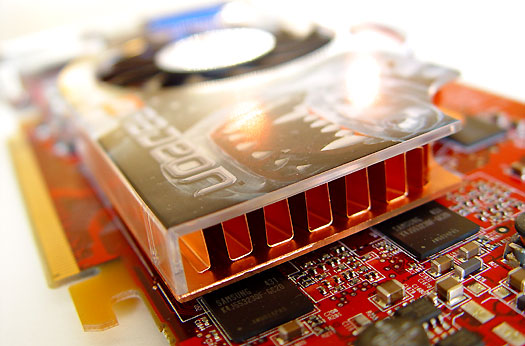Page 1
Ra deon X800 XL
deon X800 XL
Product type: Graphics card
Manufacturer: ATI
Website: www.ati.comMSRP: 299 USD
Seek best price for products of this type.
Whether you noticed it or not, December was a pretty important month for ATI. The entire x800 series basically had a refresh making the fastest even faster and next to that they have been filling some gaps in the market. Today we will be talking about a product that feature wise is the same as last weeks tested Radeon x850 XT PE. There are two distinct differences though, firstly the most important factor, the price as the product today is no less than 250 USD cheaper and targeted at a 300 USD price. Secondly, the big difference of course is performance. Still I do prefer this product over the x850 XT PE. Why you ask? Simple, this is affordable and considering the framerates it can achieve in games this is a hell of an attractive buy. Today dear friends we will be talking about ATI's new Radeon x800 XL.
The Radeon x800 XL is a new high-end product yet within that segment on the lower and thus more affordable region.
The little ogre was manufactured under codename R430 and is actually built on the smaller 0.11 micron fabrication process. The product is, of course, purely intended for the PCI-Express platform. Why not AGP you ask, as there surely is a market for it. Well, as is seems ATI is not ready for it just yet, so I don't expect it anytime soon. They are working on an AGP solution though, under codename Rialto to be precise. Yet it's just not finished, there's a big AGP market out there waiting on this for real.
Let's place everything in a nice overview:
| Chip | Pixel Pipelines | Graphics Core Frequency |
Memory Frequency | |
| Radeon X800 | R430 | 12 | 400 MHz | 350 MHz |
| Radeon X800 Pro | R423 | 12 | 475 MHz | 450 MHz |
| Radeon X800 XL | R430 | 16 | 400 MHz | 500 MHz |
| Radeon X800 XT | R423 | 16 | 500 MHz | 500 MHz |
| Radeon X800 XT Platinum Edition | R423 | 16 | 520 MHz | 560 MHz |
| Radeon X850 Pro | R480 | 12 | 520 MHz | 540 MHz |
| Radeon X850 XT | R480 | 16 | 520 MHz | 540 MHz |
| Radeon X850 XT Platinum Edition | R480 | 16 | 540 MHz | 590 MHz |
With these new cards around the corner it is rather unclear what the future is for the Radeon x800 Pro and XT, but one can assume that the new chips inserted into the x800/850 product range will slowly phase out those "older" products. The 'older' x800 Pro and XT's were and still are very hard to get as yields are bad. So if you ask me, I'd say (but it's just a guess) that the R423 chip has been revised for better yields, and thus will lead to a higher (better) production rendering the previous R423 products obsolete, but let's stick to facts.
With all that info in mind let's have a look ATI's new Radeon x800 XL, which will possibly be a very attractive purchase for most of you as it offers nice performance versus a nice price.

Radeon x800 XL, photographed in a slightly teasing way.
